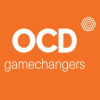Tanya is a nurse who worries that her carelessness may lead her to harm a loved one, so she loses sleep every night ruminating over ways she could have possibly hurt someone that day. Mike is a student who showers after every social interaction to prevent himself from his worst fear–– catching a respiratory illness. Sam is an accountant who struggles to make friends because they constantly obsess that they have offended someone.
What do Tanya, Mike, and Sam have in common? They all have OCD! But, what even is OCD?
OCD stands for “obsessive-compulsive disorder,” and it is a serious mental illness that involves, as the name implies, obsessions and compulsions. Obsessions are unwanted intrusive thoughts, images, urges, etc. that cause distress (International OCD Foundation, 2021). Compulsions are the repetitive behaviors (mental or physical) that a person performs to temporarily relieve the anxiety and distress caused by obsessions (IOCDF, 2021). Although compulsions may provide temporary relief, they actually reinforce the obsessive fears, causing them to return even stronger the next time. Thus, the vicious cycle of obsession, anxiety, compulsion, and temporary relief is formed and fueled.
Common obsessions include contamination concerns, religious and moral scrupulosity, unwanted sexual thoughts, the fear of harm coming to one’s self or others, perfectionism, and losing control (IOCDF, 2021). However, virtually anything can become the focus of an obsession. For example, a young adult who values her romantic relationship may obsess about whether she really loves her partner. In fact, obsessions usually target one’s personal values, which greatly contributes to the pain of the disorder.
Common compulsions include washing/cleaning, checking, reassurance-seeking, repeating, and mental compulsions like praying and counting (IOCDF, 2021). And like obsessions, compulsive behaviors can be as diverse as the people who experience them.
Everyone has experienced obsessions and compulsive behavior to some extent, but that does NOT mean “we all have a little OCD.” Further, everyone has intrusive thoughts, which are unwanted, often disturbing thoughts that pop into one’s mind. Most individuals can easily discard these unhelpful thoughts, but people with OCD obsess over them. To be diagnosed with OCD, one’s obsessions and compulsions must take up at least an hour of the day and cause significant distress and/or functional impairment (IOCDF, 2021).
It is estimated that 1 in 100 adults and 1 in 200 children live with OCD, and OCD affects all genders, races, and ethnicities equally (IOCDF, 2021). In other words, OCD does not discriminate! OCD usually onsets between the ages of 8 and 12 or in young adulthood (IOCDF, 2021). Although the exact causes of OCD are unknown, it is believed that genetics and brain differences play a role in its etiology (IOCDF, 2021).
Although OCD can wreak total havoc on the life of an individual, there is effective treatment available. Exposure and response prevention (ERP) therapy, a type of cognitive behavioral therapy, is the golden standard treatment for OCD (IOCDF, 2021). A class of medications called selective serotonin reuptake inhibitors (SSRIs) also can help alleviate symptoms of OCD (IOCDF, 2021).
If you or a loved one has OCD and you’re looking for helpful resources, check out the “Resources” tab on our website! You are not alone in this.
References
International OCD Foundation. (2021). What is OCD? iocdf.org. Retrieved April 11, 2021, from https://iocdf.org/about-ocd/
Maya Tadross
Author

